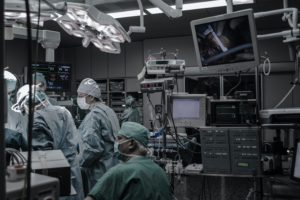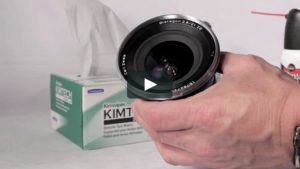
Top 5 Surgery Video Production Best Practices
Creating great surgical videos can be time consuming and unforgiving. There are no do-overs where a surgical procedure is concerned and there may be limited scope of time to focus on production adjustments and the typical tasks you would expect from a standard video production set. In fact, producing surgery videos from the operating room requires strict adherence to best practices and production procedures that you may not be familiar with if you’re not practicing surgical film production on a daily basis. Here are the top 5 surgery video production best practices that we always follow.

Get a Medical Film Crew Quote Here!
#1. HIPPA Consent is a MUST
First and foremost, before we can ever even consider starting a video production project in the OR, we have to have the consent from the patient.
Healthcare providers seeking to create surgery videos must follow HIPPA guidelines and the surgery video production team should also follow all necessary HIPPA related guidelines and best practices.
This means the medical staff must have a relationship with the patient, the patient must know that the footage is being created, and the film crew must understand the importance of avoiding capture of any patient footage that could give away PHI (personal health information).

#2. Bring Compact Equipment
Compact equipment in the OR is a must. There’s a lot going on and not a ton of extra room. Our surgery video production best practices always focus heavily on the need to produce top quality footage but without interrupting the surgical process and procedure.
It’s important to physically get into the area where the shot is to be taken but equally important to stay out of the way from other healthcare professionals.

#3. Stay Sterile & Safe
Surgery video production best practices must also focus on safety and maintaining a sterile environment. Film production crews that intend to enter the OR generally have to go through basic operating room training and should have an understanding of sterile environments.
Sterilizing equipment prior to and following production is also required to ensure continued safety of the crew and of anyone involved in the production environment.
At Beverly Boy Productions our crews are educated and prepared for shooting surgical films in the OR and represent safety and sanitary practices.

Get a Medical Film Crew Quote Here!
#4. Plan the Shoot Thoroughly in Advance
Planning is an important best practice when it comes to surgery video production. Best practices that focus on planning and routine are a key element in most production environments. Plan your shoot, the shots you will capture, and the process in advance.
You should know the routine, how the doctors operate, and how the OR staff works together prior to the shoot.
Sometimes it’s good to participate in or be present for a surgical procedure in advance of the shoot day so that you can better be prepared to understand the environment in which the film shoot will take place.

#5. Expect the Unexpected
And as with any production, you must expect the unexpected! Anything could happen when filming a surgical video and if you’re not prepared, this could derail your entire production. Communicate in advance with the surgeon what to do in unexpected situations.
Make sure it’s okay to continue filming and prepare to work together to capture the best shot. Planning and expecting the unexpected are keys to success and happen to be some of the most important surgery video production best practices for any team to follow!


